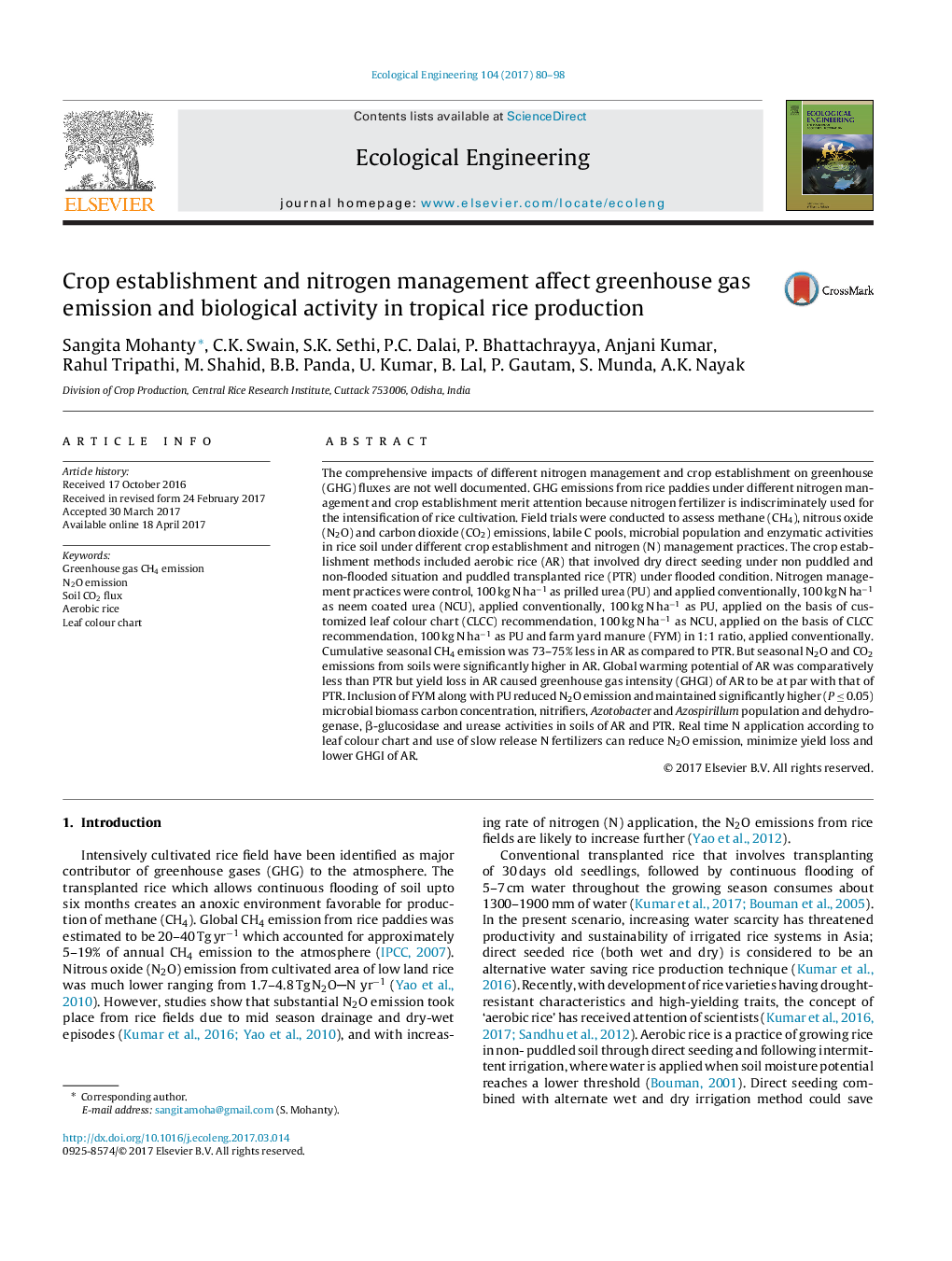| Article ID | Journal | Published Year | Pages | File Type |
|---|---|---|---|---|
| 5743948 | Ecological Engineering | 2017 | 19 Pages |
â¢Crop establishment method and N management practices had significant effects on GHG emissions from soil.â¢Aerobic rice emitted 73-75% less CH4 as compared to continuously flooded rice.â¢Emissions of N2ON and CO2 were significantly higher in aerobic rice than continuously flooded rice.â¢Application of neem coated urea on the basis of customized leaf colour chart recommendation reduced GHGI by enhancing yield.
The comprehensive impacts of different nitrogen management and crop establishment on greenhouse (GHG) fluxes are not well documented. GHG emissions from rice paddies under different nitrogen management and crop establishment merit attention because nitrogen fertilizer is indiscriminately used for the intensification of rice cultivation. Field trials were conducted to assess methane (CH4), nitrous oxide (N2O) and carbon dioxide (CO2) emissions, labile C pools, microbial population and enzymatic activities in rice soil under different crop establishment and nitrogen (N) management practices. The crop establishment methods included aerobic rice (AR) that involved dry direct seeding under non puddled and non-flooded situation and puddled transplanted rice (PTR) under flooded condition. Nitrogen management practices were control, 100 kg N haâ1 as prilled urea (PU) and applied conventionally, 100 kg N haâ1 as neem coated urea (NCU), applied conventionally, 100 kg N haâ1 as PU, applied on the basis of customized leaf colour chart (CLCC) recommendation, 100 kg N haâ1 as NCU, applied on the basis of CLCC recommendation, 100 kg N haâ1 as PU and farm yard manure (FYM) in 1:1 ratio, applied conventionally. Cumulative seasonal CH4 emission was 73-75% less in AR as compared to PTR. But seasonal N2O and CO2 emissions from soils were significantly higher in AR. Global warming potential of AR was comparatively less than PTR but yield loss in AR caused greenhouse gas intensity (GHGI) of AR to be at par with that of PTR. Inclusion of FYM along with PU reduced N2O emission and maintained significantly higher (P â¤Â 0.05) microbial biomass carbon concentration, nitrifiers, Azotobacter and Azospirillum population and dehydrogenase, β-glucosidase and urease activities in soils of AR and PTR. Real time N application according to leaf colour chart and use of slow release N fertilizers can reduce N2O emission, minimize yield loss and lower GHGI of AR.
